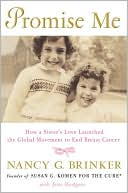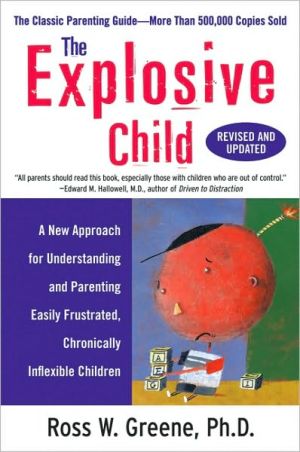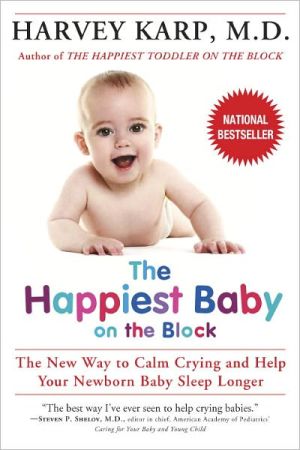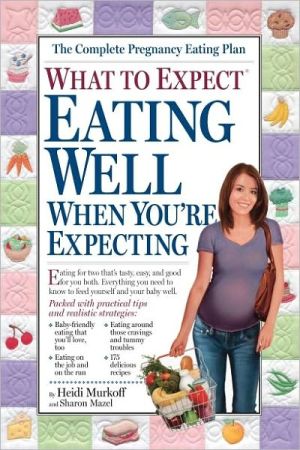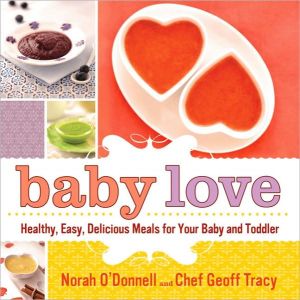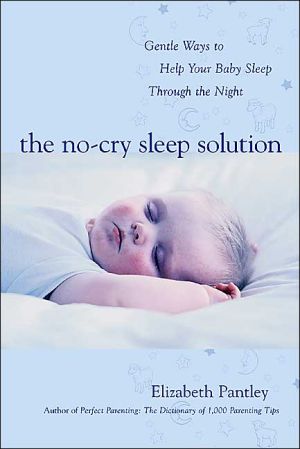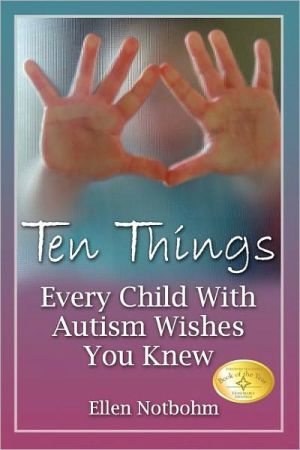When Your Child Has an Eating Disorder: A Step-By-Step Workbook for Parents and Other Caregivers
Work together toward recovery\ "When Your Child Has an Eating Disorder provides parents with hope as well as direction to aid their eating disordered child." —Vivian Hanson Meehan, president and founder, National Association of Anorexia Nervosa and Associated Disorders\ "This book provides parents with invaluable information about eating disorders and concrete steps to take in pursuing the best treatment option for their child. It is a much needed endorsement of the positive role families can...
Search in google:
The first hands-on workbook to help parents successfully intervene when they suspect their child has an eating disorder—a proven program complete with self-tests, questions, and answers, journaling exercises, role-playing activities, and resource lists. It also reveals how and when they should solicit help from the outside-therapists, medical doctors, or nutritionists, as well as how to evaluate the recovery process. This book is the first book to help parents, and help fix the family unit, not just the child with the disorder. Hollie Sobel In this description of anorexia nervosa and bulimia, the author provides treatment options and the steps to take to enter into treatment, and she discusses the recovery process. According to the rather lengthy preface, the purpose is to serve as inspiration to find the best possible treatment. This book is an interactive teaching device that helps parents gain insight into their child and themselves, as well as professionals involved with the treatment process. The author offers education and ideas to assist parents in helping their child during recovery. These do appear to be worthy objectives, but helping the parent to gain insight into themselves in the context of their child's eating disorder may be too lofty a goal. In fact, the author states, ""as you consider problems posed by this book and the personal issues it raises, you may find that you could benefit from sorting through some of these issues with the help of a psychotherapist."" According to the author, with whom I agree, the book is intended for parents. It might have been helpful to include the author's credentials on the book cover. Without that information, I wondered about her credibility. Her educational level is discussed only in the final ""about the author"" page. The quotations from credible sources on the back cover and the discussion of her significant experiences in the field do make her an authority. The author offers education about eating disorders, describes treatment options in detail, how to become involved in such treatment, and the recovery process. A strength of this book is the format of the exercises. The author provides space for the parent to complete the activities directly in the book,making it easy for the family to follow through. I also found the case illustrations and graphs to be helpful in solidifying the information provided. It was helpful that the author listed case examples to cover both bulimia and anorexia. It was also beneficial that the author provided practical information regarding insurance coverage for the treatments. A shortcoming might be providing a bit too much information regarding the treatment options, and contraindications for particular treatment (i.e., family therapy). A lay person may misinterpret this information, and refuse treatments that are appropriate or essential to the child and family's improvement. This book is of high quality, and appears to be useful for parents of children with eating disorders. I have not read other books on this topic geared toward parents, and cannot compare it to books I am familiar with which are written for the professional.
ContentsAcknowledgmentsIntroductionHow to Use This BookPart One: The Truth About Eating Disorders1. Learning All You Can2. Recognizing Signs of DiseasePart Two: Taking Action3. Beginning the Dialogue with Your Child4. Understanding Treatment Options5. Reaching for Professional HelpPart Three: Recovery6. Understanding the Recovery Process7. Recognizing and Overcoming Recovery SetbacksAppAndix A: Answers to ExercisesAppAndix B: Taking An Eating Disorder to College AppAndix C: ResourcesNotesAbout the AuthorIndex
\ From The CriticsReviewer: Hollie Sobel, PhD(Rush University Medical Center)\ Description: In this description of anorexia nervosa and bulimia, the author provides treatment options and the steps to take to enter into treatment, and she discusses the recovery process.\ Purpose: According to the rather lengthy preface, the purpose is to serve as inspiration to find the best possible treatment. This book is an interactive teaching device that helps parents gain insight into their child and themselves, as well as professionals involved with the treatment process. The author offers education and ideas to assist parents in helping their child during recovery. These do appear to be worthy objectives, but helping the parent to gain insight into themselves in the context of their child's eating disorder may be too lofty a goal. In fact, the author states, "as you consider problems posed by this book and the personal issues it raises, you may find that you could benefit from sorting through some of these issues with the help of a psychotherapist."\ Audience: According to the author, with whom I agree, the book is intended for parents. It might have been helpful to include the author's credentials on the book cover. Without that information, I wondered about her credibility. Her educational level is discussed only in the final "about the author" page. The quotations from credible sources on the back cover and the discussion of her significant experiences in the field do make her an authority.\ Features: The author offers education about eating disorders, describes treatment options in detail, how to become involved in such treatment, and the recovery process. A strength of this book is the format of the exercises. The author provides space for the parent to complete the activities directly in the book, making it easy for the family to follow through. I also found the case illustrations and graphs to be helpful in solidifying the information provided. It was helpful that the author listed case examples to cover both bulimia and anorexia. It was also beneficial that the author provided practical information regarding insurance coverage for the treatments. A shortcoming might be providing a bit too much information regarding the treatment options, and contraindications for particular treatment (i.e., family therapy). A lay person may misinterpret this information, and refuse treatments that are appropriate or essential to the child and family's improvement.\ Assessment: This book is of high quality, and appears to be useful for parents of children with eating disorders. I have not read other books on this topic geared toward parents, and cannot compare it to books I am familiar with which are written for the professional.\ \ \ \ \ Hollie SobelIn this description of anorexia nervosa and bulimia, the author provides treatment options and the steps to take to enter into treatment, and she discusses the recovery process. According to the rather lengthy preface, the purpose is to serve as inspiration to find the best possible treatment. This book is an interactive teaching device that helps parents gain insight into their child and themselves, as well as professionals involved with the treatment process. The author offers education and ideas to assist parents in helping their child during recovery. These do appear to be worthy objectives, but helping the parent to gain insight into themselves in the context of their child's eating disorder may be too lofty a goal. In fact, the author states, ""as you consider problems posed by this book and the personal issues it raises, you may find that you could benefit from sorting through some of these issues with the help of a psychotherapist."" According to the author, with whom I agree, the book is intended for parents. It might have been helpful to include the author's credentials on the book cover. Without that information, I wondered about her credibility. Her educational level is discussed only in the final ""about the author"" page. The quotations from credible sources on the back cover and the discussion of her significant experiences in the field do make her an authority. The author offers education about eating disorders, describes treatment options in detail, how to become involved in such treatment, and the recovery process. A strength of this book is the format of the exercises. The author provides space for the parent to complete the activities directly in the book,making it easy for the family to follow through. I also found the case illustrations and graphs to be helpful in solidifying the information provided. It was helpful that the author listed case examples to cover both bulimia and anorexia. It was also beneficial that the author provided practical information regarding insurance coverage for the treatments. A shortcoming might be providing a bit too much information regarding the treatment options, and contraindications for particular treatment (i.e., family therapy). A lay person may misinterpret this information, and refuse treatments that are appropriate or essential to the child and family's improvement. This book is of high quality, and appears to be useful for parents of children with eating disorders. I have not read other books on this topic geared toward parents, and cannot compare it to books I am familiar with which are written for the professional.\ \ \ 3 Stars from Doody\ \

